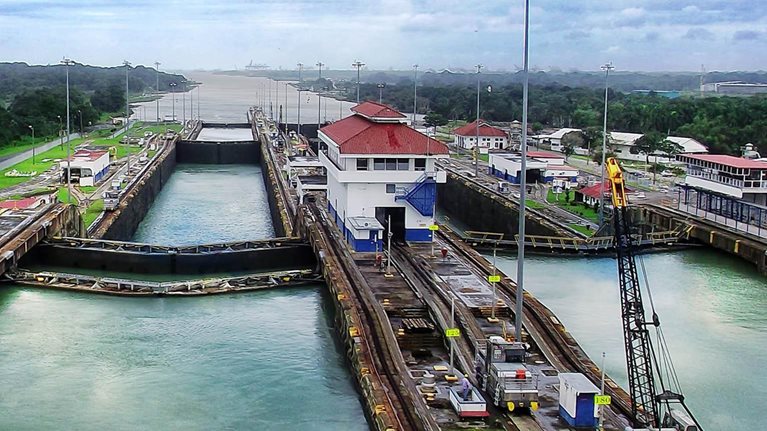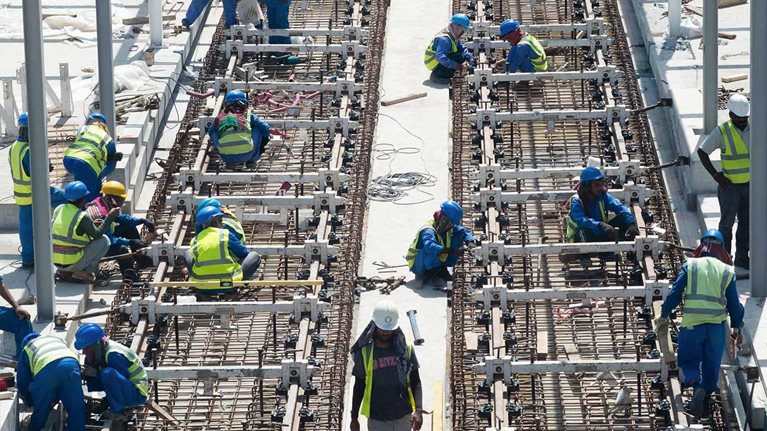Jacqueline Hinman is chairman and CEO of CH2M HILL. Founded in 1946 and based in Colorado, the global engineering company (2015 revenues: $5.36 billion) has been involved in major projects including restoration of Mississippi ports after Hurricane Katrina, Toronto’s Metrolinx Rapid Transit program, the past six Olympic Games, plus major industrial developments in India and Saudi Arabia.
In this interview with McKinsey’s Tony Hansen, Hinman discusses a wide range of issues, including dealing with environmental issues, the Olympics, attracting female talent, and the impact of Brexit.
McKinsey: How would you describe CH2M’s culture?
Jacqueline Hinman: CH2M always has been a purpose-driven company, focused on delivering sustainable solutions for the clients and communities we serve. Since becoming CEO, I’ve focused on driving a client-centric strategy to deliver on that purpose all the way through our delivery model.
Aligning around our clients also helps us to execute across engineering, design, and scientific disciplines, enabling greater innovation and exposing our people to more rewarding opportunities. That’s important if we are to retain remarkable people who are motivated to make a positive difference in the world.
We are never satisfied with making incremental improvements. Our approach combines broad, global engineering-and-construction (E&C) knowledge with local stakeholder intelligence to deliver the best outcomes.
McKinsey: The United Kingdom recently voted to leave the European Union. How do you see this decision affecting CH2M’s operations in Britain and Europe?
Jacqueline Hinman: It’s too early to tell. The terms of withdrawal are subject to a negotiation period; it could be a few years before it is implemented. But without a doubt, Brexit creates additional uncertainty in financial markets—on top of concerns like the postrecession “new normal,” the prolonged oil-and-gas slump, and the US election.
McKinsey: CH2M has worked on a number of Olympics. Can you talk about that experience?
Jacqueline Hinman: We played a small role in Rio, and we have been involved in such global-scale events for more than 20 years. We served as the first-ever environmental advisor to the Olympics, in 1996 in Atlanta. Over the years, working with others, we made some progress in establishing governance systems and standards for environmental sustainability for big events. But it took another 14 years—the London Olympics in 2012—for the world to realize there was a much greater opportunity: Olympic organizers could also advance social and economic sustainability by considering the needs of disadvantaged groups, workers, and cash-strapped communities in a meaningful way. In what may have been a once-in-a-lifetime combination of political courage, regulatory will, and unprecedented stakeholder engagement, London 2012 set a new gold standard for the Olympics. We had a leadership role in the development consortium that delivered a six-year, $15 billion program to design and build 30 sustainable venues and scalable infrastructure, all finished a year ahead of schedule and 10 percent below budget.
This included perhaps the largest environmental cleanup ever accomplished in Europe, transforming a 600-plus acre brownfield site that paved the way for the Olympic Park. We recycled 98 percent of the waste on site and delivered most of the materials via sustainable rail and water transport, while cutting carbon emissions in half and using 40 percent less water.
At the peak of construction, we had approximately 10,000 people on site, 70 percent of whom used public transportation to and from work. Another 26 percent either walked or rode bicycles. Who would have imagined some 9,600 construction workers doing this day in and day out?
Of the 40,000 people who worked on the project between 2006 and 2011, many were employed locally from some of the poorest boroughs nearby. A large number of these people had been unemployed. We established and paid for a health clinic on site, which provided health screenings for about 2,000 workers each month and more than 100,000 free health-assessment and treatment visits over a four-year period.
McKinsey: Maintaining employment standards for workers is a challenge. What is CH2M doing?
Jacqueline Hinman: Certainly there are very serious concerns about worker welfare. We’ve worked with clients Qatar 2022 [World Cup] and Expo 2020 Dubai to improve standards for employment, safety, and worker accommodations. Since third parties typically perform much of the work in the region, we strengthened supply-chain qualification requirements for procurement and contractor selection with an inspection regime for enforcement.
To advance these efforts, we have hosted industry roundtables with the Institute for Human Rights and Business this year, and now we are piloting a new mobile application that enables workers to anonymously share real-time feedback on working conditions. We see this as a valuable program-management tool to empower workers and ensure these welfare standards are being met.
McKinsey: What do you think is the engineering-and-construction sector’s responsibility with respect to the environment?
Jacqueline Hinman: Delivering triple-bottom-line returns for clients—environmental, social, and economic—demands that we also demonstrate leadership in our own operations. We were among the first in our sector to sign on to the UN Global Compact, and we just marked the 11th year of publishing our performance via the Global Reporting Initiative.
Our tenacity for sustainable solutions stands as a point of competitive differentiation for CH2M. We serve clients who share our commitment to continuous improvements that involve incredibly complex infrastructure, conservation, mitigation, and development challenges.
For example, about 15 years ago, we started working with a major sports-and-apparel manufacturer to reduce operating costs by curtailing the use of toxic chemicals and increasing recycling. A breakthrough came when we examined the broader supply-chain implications. We worked with 300 textile suppliers in 25 countries to ensure that their manufacturing methods aligned with those efforts.

The leadership challenge: Building the future of global infrastructure
But the big idea was yet to come—a greater vision for a much bigger impact. Now, we’re serving as program manager for the Zero Discharge of Hazardous Chemicals program, helping 22 of the world’s leading fashion, sports, and outdoor apparel brands eliminate hazardous chemicals from their supply chains. By 2020, 11 classes of hazardous chemicals will have been eradicated from textile production; this is a huge step to elevate standards across the entire industry.
McKinsey: Are there other examples?
Jacqueline Hinman: Another idea whose time has come is the use of natural infrastructure. We are, at last, seeing a shift toward valuing natural capital—assets such as marine and plant life—as part of the solution to protect and improve ecosystems. The challenge has been developing the right regulatory, permitting, and technical frameworks to make it happen.
A classic example comes from the northeastern United States, where significant wet weather caused overflows of the community’s combined storm-water and sewer systems, polluting a nearby lake. The Environmental Protection Agency mandated a conventional treatment program, a provisional fix that would have cost more than $100 million.
However, working with a very forward-thinking county executive, we convinced regulators to petition the federal courts to pursue an innovative, more sustainable hybrid approach incorporating both gray and natural green infrastructure. Outside the United States, these types of solutions had been proved effective to treat storm water at its source, harnessing nature to restore water quality. In November of 2009, a federal judge granted approval.
It was the first settlement of its kind in the nation to endorse green infrastructure as a storm-water-management solution. To date, the county has advanced more than 180 green and natural infrastructure projects, and the lake has made a comeback. Since then, we’ve partnered with industry and third-party experts, such as the Nature Conservancy, to pioneer hundreds of projects harnessing natural infrastructure.
McKinsey: How is the E&C sector doing with respect to attracting and retaining women?
Jacqueline Hinman: Both the E&C sector and the broader business community have plenty of room for improvement in reflecting real-world diversity, not only in terms of gender but also in lifestyle, social status, age, economics, ethnicity, creed, ideology, and thought.
The solution is to foster truly inclusive corporate cultures. CH2M performs well above industry averages for workforce diversity, with women and minorities comprising 31 and 14 percent of management, respectively. In addition, women account for more than a quarter of the board of directors. But we still see opportunities to do more.
We have to play an active role to develop the next-generation workforce, starting at an early age and investing in STEM [science, technology, engineering, and math] education. Our CH2M Foundation supports partnerships with organizations targeting underrepresented populations at all career stages. We connect young students with college mentors and young professional role models—often some of the brightest female and minority engineers in the making.


